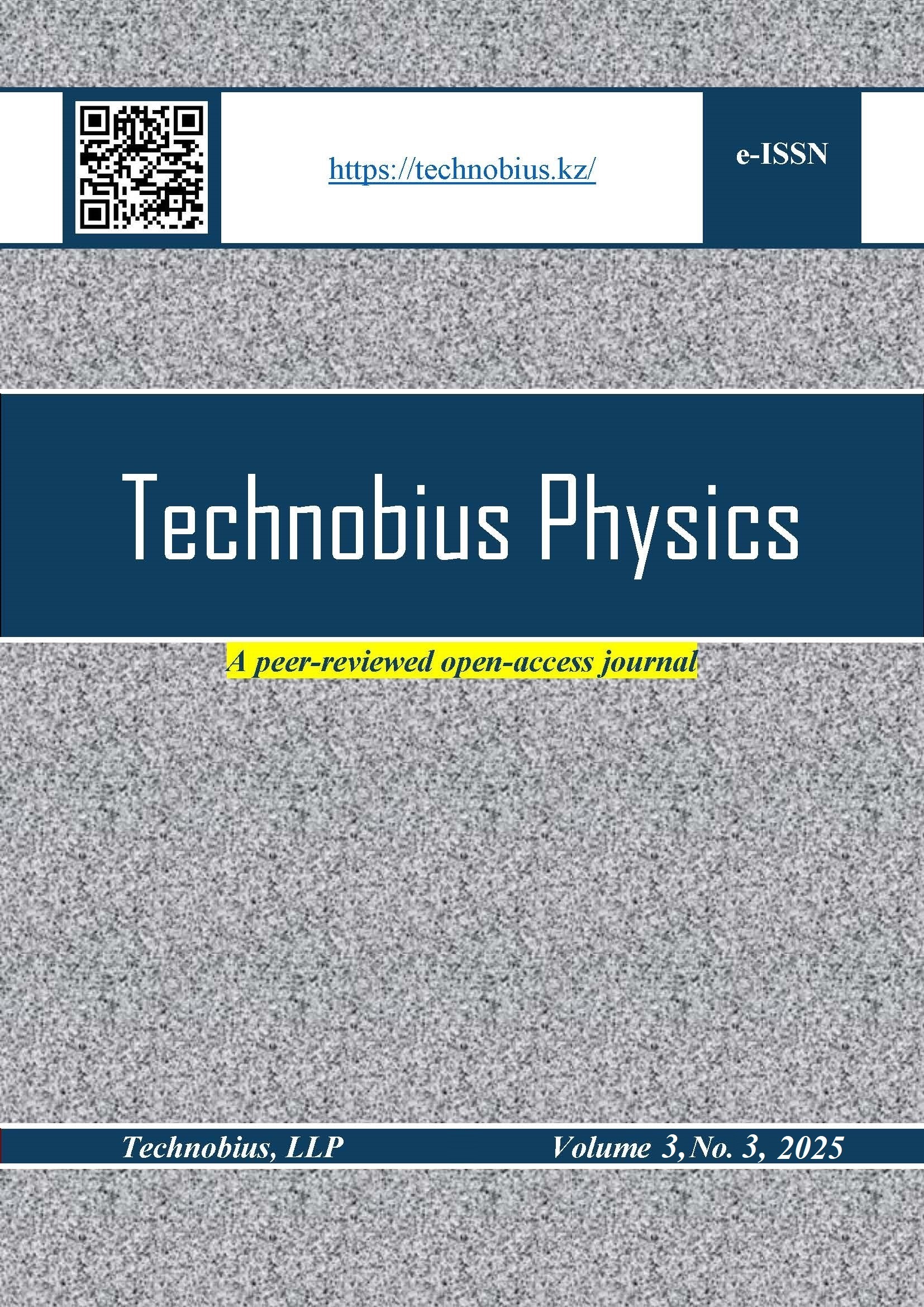Quantum effects in weak gravitational fields: towards tabletop tests of quantum gravity
DOI:
https://doi.org/10.54355/tbusphys/3.3.2025.0037Keywords:
quantum gravity, weak gravitational fields, nanoparticle interferometry, decoherence, coherence times, collapse models, CSL, cryogenic ultra-high vacuum, gravitational phases, tabletop experimentsAbstract
This study explores quantum effects in weak gravitational fields with the aim of identifying feasible pathways towards tabletop tests of quantum gravity. Using numerical simulations of matter-wave interference for nanoparticles with masses between and kg, we investigate how environmental and fundamental decoherence mechanisms shape observable signatures. The results reveal a mass-dependent reduction in interference visibility, dropping from near unity at kg to below 0.2 at kg. Coherence times were found to exceed one second for particles lighter than 10^(-16) kg under cryogenic ultra-high-vacuum conditions, but decreased to sub-millisecond scales for kg particles at room temperature, confirming thermal radiation as the dominant source of decoherence. In parallel, collapse models such as CSL predict additional suppression of visibility for interrogation times of 0.1 s, particularly for masses above kg, enabling discrimination between environmental and intrinsic decoherence mechanisms. These findings underscore the necessity of maintaining ultra-high vacuum and cryogenic environments to detect gravitationally induced quantum phases, thereby providing a practical framework for near-future interferometry experiments. While the present work is limited to phenomenological models and simulated data, it establishes a roadmap for extending investigations to heavier mass regimes, incorporating realistic noise sources, and testing alternative collapse scenarios.
Downloads
Metrics
References
O. Romero-Isart et al., “Large Quantum Superpositions and Interference of Massive Nanometer-Sized Objects,” Phys. Rev. Lett., vol. 107, no. 2, p. 020405, Jul. 2011, doi: 10.1103/PhysRevLett.107.020405.
C. Wan et al., “Free Nano-Object Ramsey Interferometry for Large Quantum Superpositions,” Phys. Rev. Lett., vol. 117, no. 14, p. 143003, Sep. 2016, doi: 10.1103/PhysRevLett.117.143003.
M. Carlesso, A. Bassi, P. Falferi, and A. Vinante, “Experimental bounds on collapse models from gravitational wave detectors,” Phys. Rev. D, vol. 94, no. 12, p. 124036, Dec. 2016, doi: 10.1103/PhysRevD.94.124036.
D. Carney, P. C. E. Stamp, and J. M. Taylor, “Tabletop experiments for quantum gravity: a user’s manual,” Class. Quantum Gravity, vol. 36, no. 3, Sep. 2018, doi: 10.1088/1361-6382/aaf9ca.
F. Tebbenjohanns, M. L. Mattana, M. Rossi, M. Frimmer, and L. Novotny, “Quantum control of a nanoparticle optically levitated in cryogenic free space,” Nature, vol. 595, no. 7867, pp. 378–382, Jul. 2021, doi: 10.1038/S41586-021-03617-W;TECHMETA.
L. Dania et al., “High-purity quantum optomechanics at room temperature,” Nat. Phys. 2025, pp. 1–6, Dec. 2024, doi: 10.1038/S41567-025-02976-9;SUBJMETA.
L. Neumeier, M. A. Ciampini, O. Romero-Isart, M. Aspelmeyer, and N. Kiesel, “Fast Quantum Interference of a Nanoparticle via Optical Potential Control,” Proc. Natl. Acad. Sci. U. S. A., vol. 121, no. 4, Jul. 2022, doi: 10.1073/pnas.2306953121.
L. Dania, D. S. Bykov, F. Goschin, M. Teller, A. Kassid, and T. E. Northup, “Ultrahigh Quality Factor of a Levitated Nanomechanical Oscillator,” Phys. Rev. Lett., vol. 132, no. 13, p. 133602, Mar. 2024, doi: 10.1103/PhysRevLett.132.133602.
J. Schäfer, B. A. Stickler, and K. Hornberger, “Decoherence of dielectric particles by thermal emission,” Phys. Rev. Res., vol. 6, no. 4, p. 043307, Dec. 2024, doi: 10.1103/PhysRevResearch.6.043307.
A. Hopper and P. F. Barker, “A levitated atom-nanosphere hybrid quantum system,” New J. Phys., vol. 26, no. 1, p. 013015, Jan. 2024, doi: 10.1088/1367-2630/AD19F6.
W. McKinney, “Data Structures for Statistical Computing in Python,” scipy, pp. 56–61, 2010, doi: 10.25080/MAJORA-92BF1922-00A.
S. Seabold and J. Perktold, “Statsmodels: Econometric and Statistical Modeling with Python,” Proc. 9th Python Sci. Conf., pp. 92–96, 2010, doi: 10.25080/MAJORA-92BF1922-011.
Downloads
Published
How to Cite
License
Copyright (c) 2025 Elmira Sayabekova

This work is licensed under a Creative Commons Attribution-NonCommercial 4.0 International License.








